Neurofeedback is a specialized form of biofeedback that focuses on training the brain to regulate its own activity. There are several types of neurofeedback, each tailored to different aspects of brain function and specific therapeutic goals.
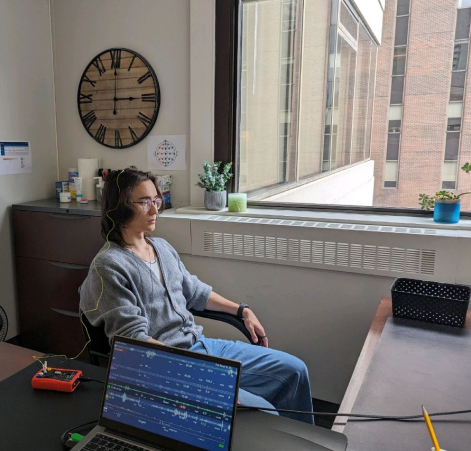
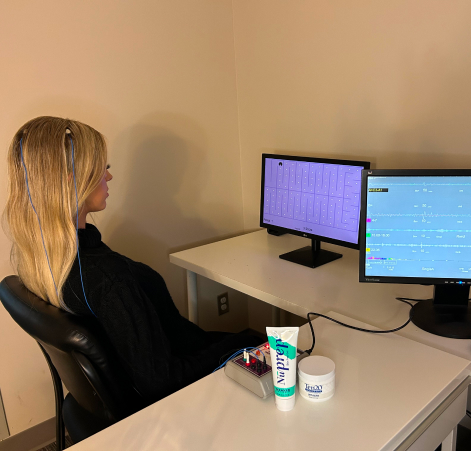
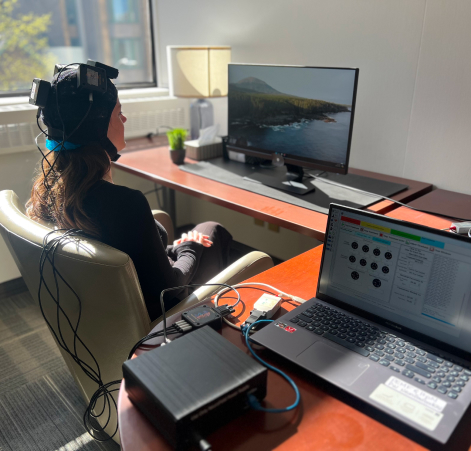
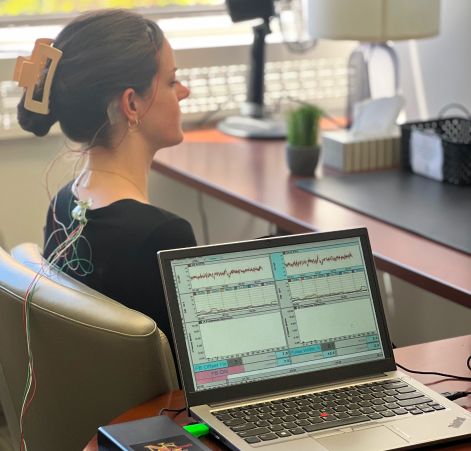
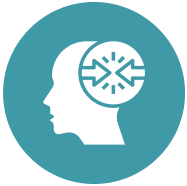

EEG Amplitude Training is one type of neurofeedback training. It uses basic video games to help teach the brain how to produce more or less of certain brainwaves at specific locations of the brain.
EEG Amplitude Training may help with improving:
Attention
• Focus
• Concentration
• Instruction following
• Problem solving
• Multitasking
• Resource management
• Logic
• Learning capacity
• Mood
• Motivation
• Sleep onset and staying asleep
• Calming anxiousness or overarousal from chronic stress or post-traumatic stress
• Reducing social or performance anxiety
• Peak performance
A quick and basic example of EEG Amplitude Training:
Our client Raj came to see us about his sleep. He reported lying awake at night for hours before falling asleep and sleeping very lightly, waking up several times throughout the night. After asking more questions and examining his QEEG assessment, we recommended EEG Amplitude training to help teach him how to increase his 'sensory motor rhythm' (or SMR). When SMR is working well, it helps with falling and staying asleep.
In session, we attached two electrodes to Raj’s scalp over the sensory motor cortex. During his sessions, Raj watched a flying saucer move around the screen. When his SMR was within an optimal amount, the flying saucer flew through a hoop. When his SMR was lower than optimal, the flying saucer didn’t quite make it through the hoop until his SMR increased. After practicing several times, Raj’s ability to increase SMR improved, and that optimal amount remained stable over time. As his SMR optimized, Raj reported that he was able to fall asleep faster and no longer experienced frequent waking throughout the night.
EEG amplitude neurofeedback uses computer-based operant conditioning to teach the brain to optimize the EEG(brainwaves). This is a reward-based training, rooted in human learning principles.We use basic video games to engage the brain, such that when the brain regulates within the desired parameters, the video game will provide positive feedback (e.g.,the spaceship will fly in the desired pattern and a sound will play). When the brainwaves are not within the desired parameters, the game stops working until the client is able to effectively regulate again. The feedback provided happens in real time, so that the body or brain can learn to adjust in the moment. These adjustments are targeted and tailored to each unique individual and monitored throughout each session. Trained technicians make sure that the feedback is always within the correct threshold during each session and for each individual client.Technicians are sometimes able to encourage this change through gentle coaching, but most of the adjustments happen involuntarily,through the client’s observation of the visual and auditory feedback provided by the system. After practicing several times,the brain can become more experienced in adjusting. The experience and performance of the brain and body shift gradually overtime, as neurofeedback and biofeedback are learning tasks that require practice over several sessions.
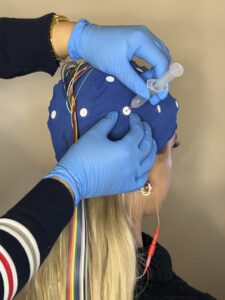
sLoRETA/swLoRETA Z-Score Neurofeedback Training is a type of neurofeedback training that uses a basic game or movie to help teach the brain to improve connections and communication between different areas or “networks.”
sLoreta and swLoRETa may help with improving:
• Attention
• Focus
• Concentration
• Instruction following
• Problem solving
• Multitasking
• Resource management
• Logic
• Learning capacity
• Mood
• Motivation
• Organization
• Planning
• Calming anxiousness or overarousal from chronic stress or post-traumatic stress
• Peak performance, etc.
A quick and basic example of sLoRETA Neurofeedback Training:
Sonia’s parents reported that her teachers were noticing difficulties with paying attention in class. She had trouble staying on task when doing homework, but she was able to focus very well when she was doing something she enjoyed (like crafts). After asking more questions and examining her QEEG assessment, we recommended sLoRETA Z-Score neurofeedback training to help improve connectivity in the Attention Ventral Network, which is associated with stimulus-driven distractibility and mediating changes in attentional focus.
Sonia enjoyed watching movies during her sessions. When the Attention Ventral Network optimized, the movie was bright and in focus, and the sound was on. When there was dysregulation in the network, the movie picture would fade, and the volume would lower. After about 7 sLoRETA Z-score neurofeedback sessions, Sonia’s parents began noticing improvements in her ability to stay focused on her homework. Her teachers noticed as well. An updated QEEG at the 12th session revealed significantly improved connectivity in the Attention Ventral Network.
Low-Resolution Electromagnetic Tomographic Analysis (LoRETA) is a technique used to estimate deeper brain origins of cortical activity. sLoRETA/swLoRETA Z-score neurofeedback training uses 19 surface electrodes in a fitted cap to target and optimize precise areas corresponding to deeper brain regions, as well as Brodmann areas, entire networks, coherence, and processing speed (phase).
Brain activity is coordinated through neuronal networks. When discussing networks, we are referring to an interconnected group of brain structures that are hypothesized to be part of a functional system. Regulation and function in the connectivity of these networks is most often assessed by coherence in the EEG. Coherence provides an assessment of how stable the phase relationship is between different sites of the brain. Coherence shows the synchronization and functional interaction of shared information between sites.
sLoRETA/swLoRETA Z-score neurofeedback training uses computer-based operant conditioning to teach the brain to optimize functioning. This is a reward-based training, rooted in human learning principles. We use a basic stimulus (an image and sound appearing and then disappearing) or movies/TV shows (Netflix) to engage the brain, such that when the brain regulates within the desired parameters, the movie will provide positive feedback (e.g., the picture will be bright and the sound on). When the brainwaves are not within the desired parameters, the movie stops working until the client is able to effectively regulate again.
When the connectivity or communication between areas of the brain is dysregulated, this may impact our thoughts, behavior, and/or mental performance. As we adjust the connectivity or communication, corresponding behaviors or mental performance outcomes may also adjust. The feedback provided happens in real-time so that the body or brain can learn to adjust in the moment. These adjustments are targeted and tailored to each unique individual and monitored throughout each session. Trained technicians make sure that the feedback is always within the correct threshold during each session and for each individual client. Technicians are sometimes able to encourage this change through gentle coaching, but most of the adjustments happen involuntarily, through just the client’s observation of the visual and auditory feedback provided by the system.
After practicing several times, the brain can become more experienced in adjusting. The experience and performance of the brain and body shift gradually over time, as neurofeedback and biofeedback are learning tasks that require practice over several sessions. One of the benefits of sLoRETA/swLoRETA Z-score neurofeedback training is that it can target many areas of the brain at the exact same time.
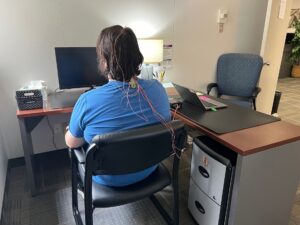
High Performance Neurofeedback Training (HPN) is one type of non-invasive and safe neurostimulation. It sends tiny low-energy micro pulses to the brain in particular patterns and frequencies chosen based on each client’s unique EEG, history, and goals. The signals are so tiny that you don’t feel any sensations from the microcurrent as it occurs. The signals help to nudge the brain out of a 'stuck' pattern toward a more optimal way of functioning.
HPN may help with:
• Post-concussive symptoms
• Brain fog
• Improving mood
• Calming anxiety or overarousal from chronic stress or post-traumatic stress
• Social or performance anxiety, etc.
A quick and basic example of HPN:
Our client Clara had been experiencing stress, anxiety, and burnout because of her busy schedule, demands at home, and challenging work environment. After asking more questions and examining her QEEG assessment, we recommended Clara try High Performance Neurofeedback (HPN) sessions. During the sessions, Clara read a magazine while we attached sensors to her scalp and provided very brief micro-stimulation at a few different locations on her scalp. After the first couple of sessions, Clara began to report that, even though her schedule remained busy, she felt significantly less stressed and noticed that things that previously bothered her a lot didn’t seem to bother her anymore. She noticed that she felt more cheerful and found it easier to manage her emotions. As we progressed with HPN sessions, Clara started noticing these positive improvements lasting longer and longer after each session, and she began to taper off sessions.
High Performance Neurofeedback (HPN) is a type of neurostimulation directed toward regulating the brain and central nervous system. It utilizes EEG (electroencephalogram) signals obtained from sensors on the scalp to monitor brainwaves and provide corresponding low-energy micro-stimulation (feedback) to the brain. Although the feedback signal is very small, it results in measurable changes in brainwaves, which can help the brain to create a new stable pattern.
The micro-stimulation is not detected as a sensation; it is non-invasive and safe. The sessions do not require engaging with games or movies like other types of neurofeedback. Sometimes improvements are noticed after the first couple of sessions for a short duration of time (e.g., a few hours to a day). Typically, as sessions progress, effects begin to last longer each time, such that eventually there is no noticeable loss of effect over time.
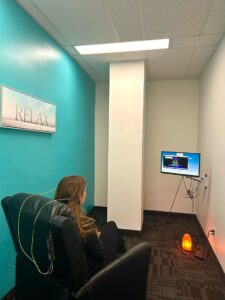
NeurOptimal is a dynamic system that provides auditory feedback when changes or variability in the brain are detected. This helps to inform the brain that it’s ready to make a shift toward more optimal functioning.
NeurOptimal may help with:
• Sleep management
• Mental acuity
• Learning capacity
• Attention
• Focus
• Concentration
• Relaxation
• Resiliency
• Stress management
• Reducing anxiousness
• Post-traumatic stress
• Performance anxiety, etc.
A quick and basic example of NeurOptimal: Mateo’s parents expressed concern that he was showing signs of anxiousness and destructive behaviors. While Mateo was achieving success at school, he was acting out at home and having difficulty falling asleep at night. After asking more questions and examining his QEEG assessment, we recommended Mateo try NeurOptimal sessions. After completing sessions of NeurOptimal, Mateo’s parents reported noticing that he was settling faster when he became dysregulated. He showed less harmful behavior because he was able to calm down before escalation and have more meaningful conversations about his feelings. Mateo’s parents reported that his sleep improved, and they noticed less fidgeting, nail-biting, and generally a calmer kid overall.
NeurOptimal aims to help the central nervous system communicate effectively with itself through the detection of change. The system detects sudden changes or variability in neural activity and provides real-time feedback in the form of an auditory stimulus, informing the brain that it is ready to make a shift. This feedback invites the nervous system to break away from a dominant stuck pattern.
As the brain practices making shifts away from those stuck patterns through the support of NeurOptimal, it begins to learn to engage in that regulatory process on its own. NeurOptimal is not a linear training system. It is not dependent on any specific part of the brain or training protocol. By measuring the communication process and the changes going on within those processes, the training can provide the brain with the information it needs at the time.
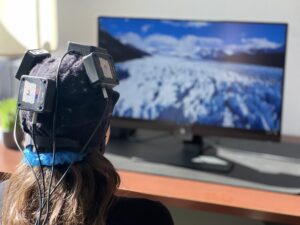
Pulsed Electromagnetic Field (pEMF) stimulation is one type of non-invasive and safe neurostimulation. It sends tiny and gentle electromagnetic pulses to the brain or body in particular patterns and frequencies, chosen based on each client’s unique EEG, history, and goals. The signals are so tiny that you don’t feel any sensations from the electromagnetic stimulation as it occurs. The pulsed signal may guide the brain in a helpful direction and engage regenerative systems.
pEMF may help with:
• Post-concussive symptoms
• Brain fog
• Sensitivities
• Calming anxiety or overarousal
• Improving mood
• Motivation
• Inflammation reduction, etc.
A quick and basic example of pEMF:
Our client Jean experienced a concussion and came to us reporting difficulties with brain fog, dizziness, and headaches. After asking more questions and examining his QEEG assessment, we recommended Jean try Pulsed Electromagnetic Field (pEMF) stimulation sessions. During the sessions, Jean practiced deep breathing while we attached a soft cap and 4 coils to his scalp that provided gentle pulsed signals. After the first few sessions, Jean reported that his headaches were more manageable, he was sleeping better, and he felt energized after the sessions.
Pulsed Electromagnetic Field (pEMF) is a type of neurostimulation directed toward regulating the brain and central nervous system. It provides the brain or body with gentle electromagnetic pulses (stimulation) to targeted locations at particular frequencies. Although the feedback signal is very small, it results in a measurable change in the brainwaves, which can help guide the brain toward a more optimal direction.
It is theorized that when used on the body, pEMF can stimulate cells to increase capillary blood flow, which increases cell resources and improves cell waste removal. This may optimize cell function by increasing energy stores, reducing free radicals, and reducing inflammation. The gentle stimulation is not detected as a sensation; it is non-invasive and safe. The sessions do not require engaging with games or movies like other types of neurofeedback. Sometimes improvements are noticed after the first session.
Uses visual displays of light and sounds at different frequencies to gently guide the brain into different brainwave patterns. It can be helpful for sleep management, stress reduction, improved mood, mental sharpness, concentration, and memory
Stimulates cranial nerves by directly
modulating cortical oscillations in the
temporal lobe. This can be helpful for
anxiousness, insomnia, pain reduction, and
improved mood.
Involves computer-based operant
conditioning, by providing real-time
feedback into muscle activity in the body,
and teaching the client to gradually reduce
tension, spasms, clenching, or pain.
Is a form of training focusing on the
physiological variation between the
heartbeat and breath rate. It is involved
in autonomic nervous system regulation.
Having higher HRV is linked with greater
resiliency to stress and illness, as well as
overall health and well-being.
Involves measurements of the electrical
conductivity of the skin. Higher levels of
arousal (such as when a client experiences
stress) cause skin conductance and
transpiration to increase (e.g., sweating).
When relaxed, skin conduction decreases
and shows less variability. Training is used
to teach clients to enhance their ability to
manage psychological and physiological
arousal, which can help build resiliency to
stress.
Uses profusion to reduce inflammation.
When inflammation occurs, nitric oxide is
bound to cytoplasm C. This bond is broken
by infrared, releasing the nitric oxide, and
relaxing the epithelium (layer of cells lining
organs and glands) allowing increased blood
flow and expansion of microcapillaries.
The infrared also speeds up Kreb's cycle (a
sequence of reactions by which most living
cells generate energy during the process of
aerobic respiration). Reducing inflammation
can be helpful to improve circulation. It is
often used for clients who experience post-
concussive symptoms, chronic pain, and
inflammatory conditions such as arthritis.
Ready to unlock your brain’s potential? Discover how neurofeedback can empower you to gain control over your mental and emotional well-being.
Our Goal is to Help You Feel Better by Providing Specialized Services.
Phone: (506) 357-0710
Email: adminlincoln@truenorthps.ca
Phone: (902) 439-7396
Email: adminpei@nuvistamentalhealth.ca
Phone: (613) 435-3055
Fax: (613) 435-7055
Email: adminkanata@nuvistamentalhealth.ca
Phone: (613) 435-3055
Fax: (613) 435-7055
Email: adminkanata@nuvistamentalhealth.ca
Phone: (416) 619-0238
Fax: (416) 848-7452
Email: admintoronto@nuvistamentalhealth.ca